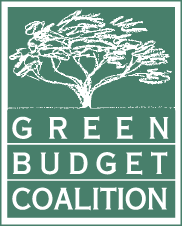Accurate data, research, information, and knowledge is fundamental to support evidence-based monitoring and decision making to support the global mission to halt and reverse biodiversity loss by 2030 and live in harmony with nature by 2050. Public investments in data and monitoring are critical to making informed investments in habitat, including species-at-risk recovery, biodiversity enhancements, increases in carbon sequestration, and climate change adaptation.
In October 2021, the European Union launched Biodiversa+ as part of the European Biodiversity Strategy for 2030. In collaboration with partners, it is a comprehensive, ambitious, and long-term plan to put Europe’s biodiversity on a path to recovery by 2030. It aims to connect science, policy, and practice for transformative change seeking to: support biodiversity research and innovation; improve monitoring of biodiversity and ecosystem services; deploy nature-based solutions and valuation of biodiversity in the private sector; and ensure sufficient science-based support for policy-making and implementation.
The Green Budget Coalition recommends that Canada’s National Biodiversity Strategy and Action Plan adopts a similar approach as Biodiversa+ in order to advance efforts towards achieving the KMGBF targets and goals.
Total Recommended Investment: $400 million over five years
Cataloguing, updating, and developing geospatial inventories
Cataloging all the ecosystems in Canada will help ensure evidence-based decisions are made to protect, rehabilitate, enhance, and sustain our environment, inform nature-based climate solutions, and measure habitat conversion across Canada. Moreover, the establishment of a comprehensive baseline of geospatial data is essential for biodiversity to be accurately valued, conserved, and restored. The following should be top priorities in this effort:
- Conduct and complete audits of existing geospatial datasets to identify gaps in collaboration with subnational governments, Indigenous communities and groups, NGOs, and other federal departments and agencies. [AAFC, DFO, ECCC, NRCan, StatCan]
- Develop and update geographic and landscape- feature data to establish the following national geospatial habitat inventories: Canadian National Wetland Inventory [ECCC]; National Grasslands Inventory [AAFC]; Terrestrial Species at Risk Inventory [ECCC]; Aquatic Species at Risk Inventory with continued management and updates [DFO]; National Forest Inventory [NRCan]; and National Invasive Species Inventory [ECCC]
$300 million over five years [AAFC, DFO, ECCC, NRCan, StatCan]
Understanding, protecting, and restoring Canada’s coastal blue carbon ecosystems
Healthy coastal blue carbon ecosystems — such as seagrass meadows and salt marshes — provide climate, biodiversity and development benefits. Coastal wetlands provide valuable habitat for many economically and culturally important species, protect coastal communities from flooding, improve water quality, and act as carbon sinks. Rising sea levels, warming ocean temperatures, coastal development, and invasive species threaten the resiliency of coastal wetlands, resulting in the loss of these critical ecosystems.
While efforts are ongoing to map blue carbon ecosystems nationally, we also need to understand local and regional variations in carbon sequestration, as well as the full suite of ecosystem services provided by these habitats. This work should happen alongside efforts to protect, restore, and effectively manage coastal habitats (see Decade of Restoration: our shared pathway to Target 2, earlier in this document), which need to recognise the interconnections between terrestrial and marine systems (see the Protecting Land and Ocean Ecosystems sub-section, earlier in this document) and should be led by DFO with support from PC, StatCan, and ECCC.
- Develop intergovernmental mechanisms that address the jurisdictional complexity of coastal ecosystems and strengthen efforts to steward and protect, restore and manage coastal blue carbon ecosystems;
- Mapping and monitoring of blue carbon ecosystems by coastal communities;
- Research by large-scale multidisciplinary collaborations and small-scale community groups to fill key knowledge gaps;
- Protection and restoration of coastal blue carbon ecosystems to increase ecosystem resilience, support key coastal processes, and maintain ecosystem services; and
- Creation of a sustainable funding mechanism for monitoring and stewardship of coastal ecosystems.
